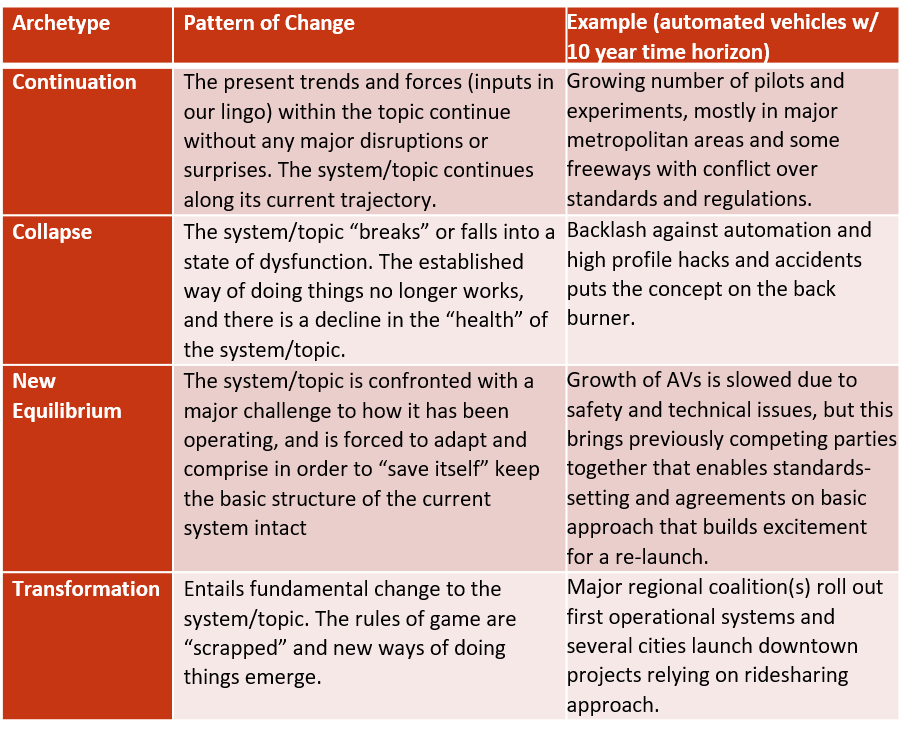Let me begin with proper credit to Professor Jim Dator for the concept [Jim Dator, Alternative Futures at the Manoa School, Journal of Futures Studies, November 2009, 14(2): 1 – 18. ] and Wendy Schultz’s scenario archetype elaborations and former futurist colleague at the former Social Technologies and [not surprisingly a Hawaii program grad] Mark Justman as my key influences, and probably others that I’ve forgotten.
The principal tweak that we’ve made is to genericize the archetype stories into underlying patterns of change that can be used to explore the future of any topic. A key assumption is that we view the topic (“domain” in our lingo) as a system. We use a loose operational definition of system as “the way things are done or the established rules of the game.” That domain/system is likely to follow one of the four archetypes, which are essentially common patterns of change.
 The table explains the patterns for each archetype, and includes a “made-up” example using automated vehicles.
The table explains the patterns for each archetype, and includes a “made-up” example using automated vehicles.
The archetypes provide the framework or structure for developing the scenario stories. You take the set of drivers developed in the previous step, and interpret their outcomes in each of the four archetypes. That provides you with a set of ingredients or plot elements upon which you can build the scenario story. Simple, right? A great technique to use with groups new to scenarios and foresight, and from our experience, they provide a robust set of scenarios to work with. See our Future of Work for NASA example
What is going to be key, I think, is that once we’ve set the drivers in each archetype, how can we be sure to include the interesting non-driver information we gathered (scan hits for instance may not be connected to drivers) into our scenarios. – Andy Hines
Leave a Reply